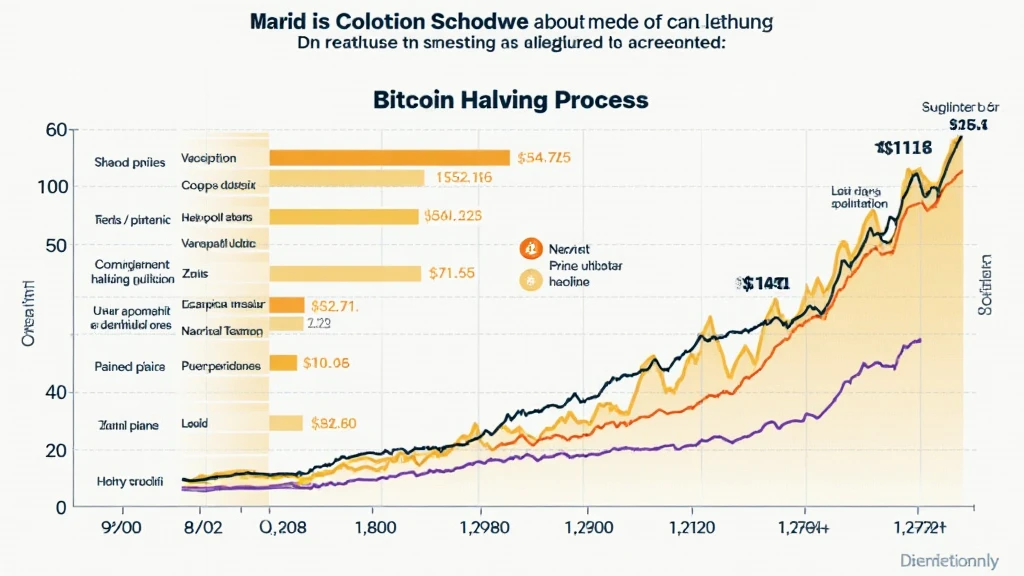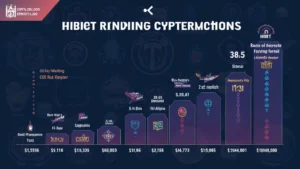Introduction
In the realm of cryptocurrencies, the Bitcoin halving event is the subject of speculation and excitement. With 2024’s Bitcoin halving approaching, many cryptocurrency enthusiasts are eager to understand its economic implications. After all, previous halvings in 2012, 2016, and 2020 have historically resulted in significant market shifts. Recent reports indicate that Bitcoin’s supply reduction during halving can lead to price increases due to scarcity. For example, the Bitcoin price soared from around $11 in 2012 to over $1,000 a year later, all while the trading volume exploded. With forecasts from analysts estimating a 25% rise in Bitcoin’s value in the 12 months following the 2024 halving, we aim to explore the economic implications of this phenomenon extensively.
The Mechanics of Bitcoin Halving
To comprehend the economic implications of Bitcoin halving, it’s crucial to grasp how it works. Bitcoin operates on a predefined monetary policy encoded in its blockchain. Every four years, the number of Bitcoins awarded to miners for validating transactions is halved, which reduces the new supply entering circulation. Currently, miners receive 6.25 Bitcoins per block mined, but after the 2024 halving, this will decrease to 3.125 Bitcoins. This process creates built-in scarcity, mirroring the dynamics of precious metals like gold.
Let’s visualize this: imagine a bakery that produces 100 loaves of bread daily; if production is cut in half due to grain shortages, the remaining bread will command higher prices. Similarly, as miners earn fewer Bitcoins post-halving, the overall supply diminishes, influencing market demand and prices.

Historical Trends in Bitcoin Halving
Halvings have consistently preceded substantial market rallies. Following the 2012 halving, Bitcoin saw a price increase that peaked at $1,200 in late 2013. The 2016 halving triggered a remarkable surge, culminating in Bitcoin reaching nearly $20,000 in December 2017. The latest halving in 2020 brought Bitcoin to an all-time high exceeding $65,000 in April 2021. Historical patterns indicate that the market reacts positively to these events, leading to heightened interest from investors.
As an intriguing case, consider the following data on Bitcoin price growth after each halving:
| Halving Year | Price Pre-Halving | Price Peak (1 Year Later) | Growth Percentage |
|---|---|---|---|
| 2012 | $11 | $1,200 | 10,900% |
| 2016 | $650 | $20,000 | 2,976% |
| 2020 | $8,700 | $65,000 | 648% |
As evidenced, the historical performance post-halving has attracted both seasoned investors and newcomers to the cryptocurrency space.
Investor Behavior and Market Sentiment
Bitcoin halving influences investor behavior significantly. The anticipation surrounding halving events often leads to increased buying activity, driven by hope for future price appreciation. Market sentiment can tilt between FOMO (Fear of Missing Out) and FUD (Fear, Uncertainty, Doubt), directly affecting trading patterns. The speculative nature of cryptocurrencies means investors often rush in before a halving, aiming to capture potential price increases, while others may settle in for the long term.
It’s essential to recognize that not all halving events result in immediate price surges. Post-halving corrections can occur, where the market stabilizes after an initial spike. For Vietnamese crypto enthusiasts, understanding these market rhythms is vital, especially as user growth continues in Vietnam.
The Vietnamese Market and Its Growth
Vietnam has witnessed a noticeable surge in cryptocurrency adoption. According to a report by Statista, the number of cryptocurrency users in Vietnam rose by approximately 160% in 2021. By 2024, projections suggest that Vietnam could have over 10 million cryptocurrency users, driven by increased accessibility and regulatory clarity.
For investors in Vietnam, the timing of the Bitcoin halving in 2024 aligns perfectly with this rising tide of interest. With local exchanges like HIBT.com facilitating trading, Vietnamese investors are well-positioned to capitalize on potential price movements associated with the halving event.
Future Outlook: What to Expect Post-Halving
The aftermath of the 2024 Bitcoin halving will be closely monitored. Analysts predict several economic implications:
- Increased Demand: With fewer Bitcoins entering circulation, demand from hodlers and institutions is expected to surge, potentially pushing prices upward.
- Institutional Interest: Institutions may leverage this scarcity to justify Bitcoin as a hedge against inflation, similar to the gold narrative.
- Market Volatility: While the halving may lead to price increases, there will likely be volatility as traders react to market dynamics.
- Altcoin Impact: The Bitcoin halving may impact altcoins, especially those correlated with Bitcoin’s price movements. Investors might reallocate funds to altcoins once Bitcoin’s price stabilizes.
In 2025, the emergence of promising altcoins is expected. A report by Cointelegraph suggests that top contenders include Ethereum 2.0 and Cardano, which may gain traction as Bitcoin dominance fluctuates.
Conclusion
In conclusion, Bitcoin halving is a pivotal event that carries substantial economic implications for the cryptocurrency landscape. As market participants prepare for the dramatic changes that follow, understanding historical patterns and investor behavior is crucial. With a growing base of Vietnamese cryptocurrency users, the 2024 halving presents unique opportunities for local investors. While the data suggests a bullish trajectory post-halving, caution remains vital as market dynamics constantly evolve.
Time to gear up as we anticipate the next Bitcoin halving and what it may mean for not just Bitcoin, but the entire cryptocurrency ecosystem.
For more insightful information about Bitcoin, cryptocurrency trends, and market-related updates, visit bitcoincashblender. Stay ahead in the fast-paced world of digital assets.
Author Bio
Dr. Alex Petrov, a respected blockchain economist, has authored over 30 papers in the field and led audits for recognized cryptocurrency projects. His insights into economic implications make him a sought-after voice in the blockchain community.











